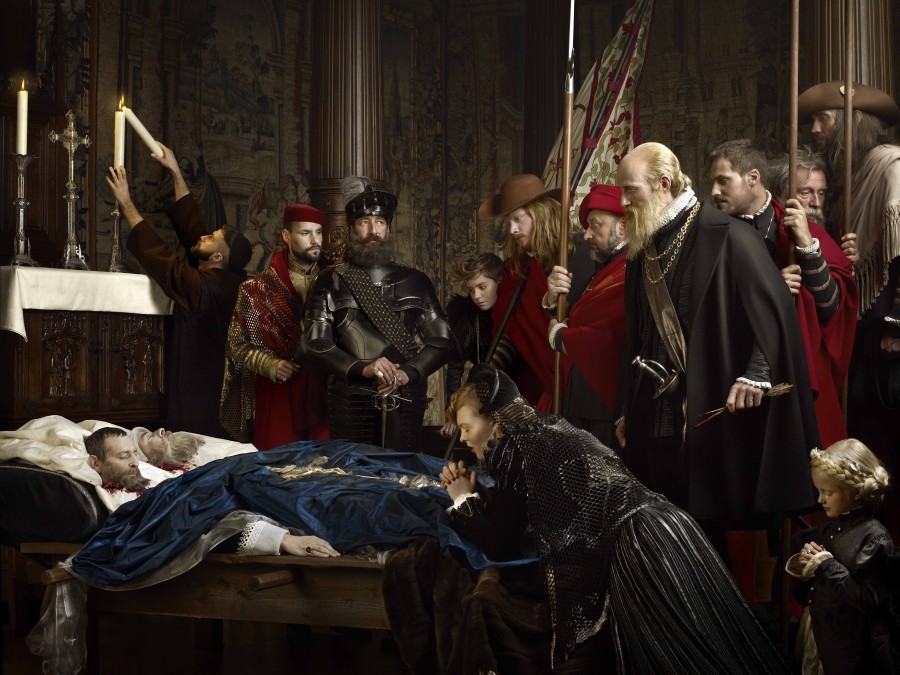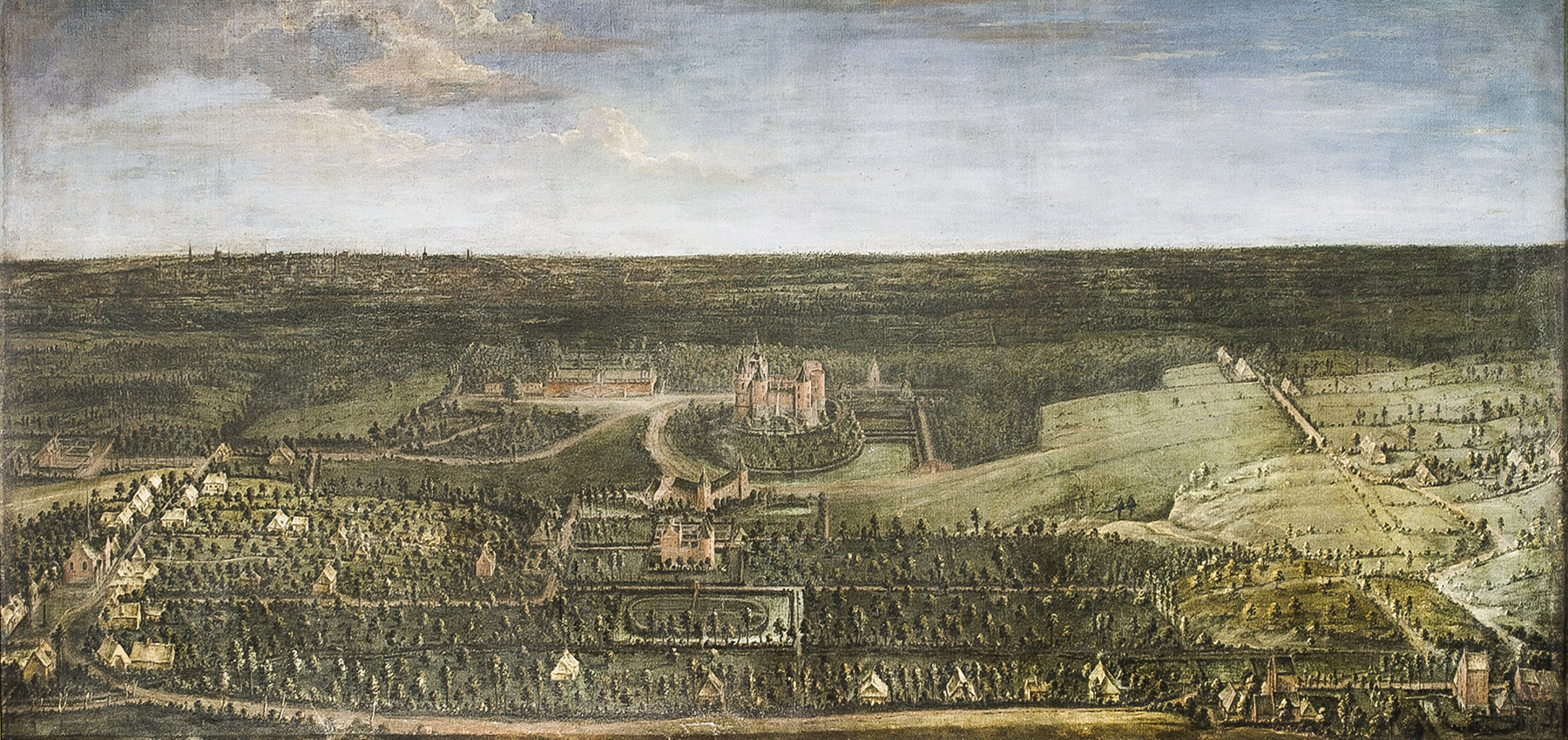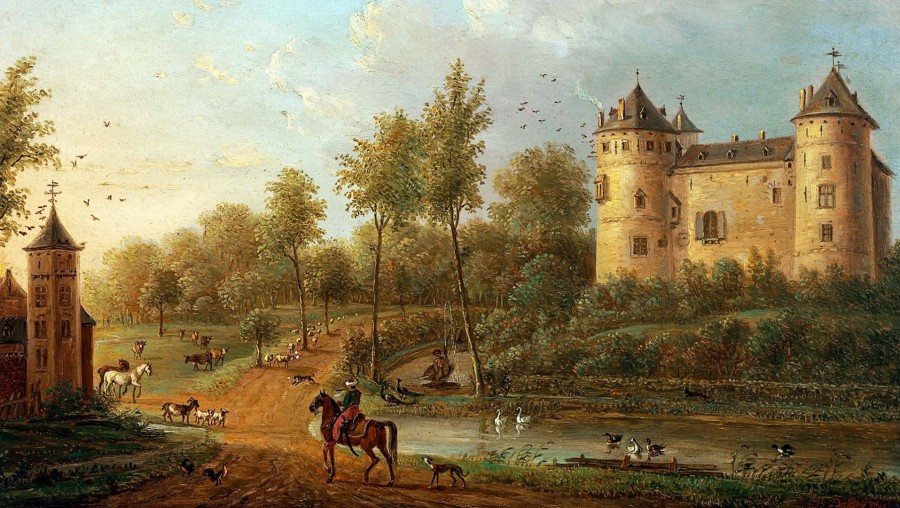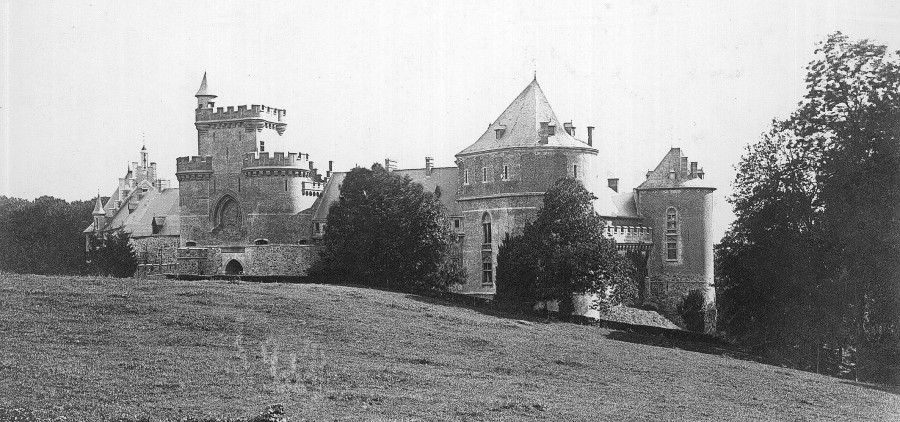History
Feel the heartbeat of history
Still life with the heart of the Count of Egmond, © Erwin Olaf, Gaasbeek Castle collection
800 years of Gaasbeek Castle
An eventful past
The current reincarnation of Gaasbeek Castle is just one of the many castles that have stood on these grounds. The castle we see today is a nineteenth-century romantic interpretation of what people in 1890 thought the Middle Ages looked like. Just because the visible castle deliberately leads us astray, that does not mean there is not a kernel of truth hidden behind its high battlements and thick walls. As early as the first half of the thirteenth century, a castle was ensconced here above the slopes of the Pajottenland.
This area was then part of the Duchy of Brabant, which included the cities of Brussels, Antwerp and Leuven. This duchy had already dared to fight a war with the former County of Flanders – now roughly East, West and French Flanders – once before. Back then, a fortified castle on the border with the Country was convenient for protecting the important city of Brussels. The flip side of the coin? The castle was besieged more than once and even went up in flames on one occasion.
The Count of Egmond
Through inheritance, conquest and purchase, the grounds changed hands several times. Thus, in 1565, along with the village of Gaasbeek, it came into the hands of Lamoral of Egmond. This high nobleman, who mainly resided in Brussels, owned lands all over the Netherlands. He was a pivotal figure in the many political and religious conflicts of his time. This literally cost him his head in 1568: along with the Count of Horn, he was beheaded in Brussels' Grand Place, by order of the Spanish King. Especially from the nineteenth century onward, the Count of Egmond was held up as a national hero – the victim of cruel oppression by a foreign ruler. The story is more nuanced than that, but his name has at least stuck to Gaasbeek Castle.
From fortified castle to summer residence
In the seventeenth and eighteenth centuries, the fortified mediaeval barracks transformed into a luxurious summer residence for a number of notable figures, including René de Renesse. This Count of Warfusée married Alberta of Egmond in 1615. He embellished the grounds with some flamboyant park buildings, such as the gloriette, to receive his summer visitors in peace and opulence. In addition to being a building principal with a penchant for frills, de Renesse was also a passionate conspirator. This cost him first his castle, when his scheming forced him to flee from Gaasbeek, and then in 1637 in Liege, even his life in a gruesome way. His body ended up cut into pieces in the River Meuse.
Entry of the Arconati Visconti family
In the eighteenth century, the property went to Louis Alexandre Scockaert de Tirimont, who restored the Castle yet again, except for the south-east wing. Since then, we have known the castle in its present semicircular form. Through marriages and romances, the grounds then passed into the hands of the noble Italian Arconati Visconti family. From 1796, the very flamboyant Paul Arconati made Gaasbeek his summer residence. Among other things, he alternated the mayoralty of Brussels and distant travels with exotic purchases for the castle. In the castle park, he had a Triumphal Arch erected in honour of his great hero, Napoleon Bonaparte.
A place of refuge
When Paul's cousin Giuseppe and his wife Costanza had to flee with their one-year-old son, after participating in a failed liberal coup in Milan against the Austrian rulers, they ended up at Gaasbeek in 1821. The couple turned the castle into a safe house slash intellectual centre for the Risorgimento movement. They were working for the democratisation and unification of the Italian territories. Costanza in particular wandered studiously throughout Europe, building a network from London through Paris and Bonn to Greece.
The infant son Giuseppe and Costanza brought with them from Milan, Carletto, died miserably in 1839 in his early twenties. He is still buried in the Gaasbeek cemetery; his parents would never set foot in the region again. Giuseppe and Costanza returned to Milan to continue their politics. Their second son, the traveller and enfant terrible Giammartino, married the poor French Marie Peyrat, an ardent Republican and anti-Catholic. When he died after three years of marriage in 1876, the entire family estate passed into her hands, including Gaasbeek Castle.
Marie's heritage
Marquise Arconati Visconti transformed Gaasbeek Castle into the late mediaeval fairytale fortress it is today. With period rooms and neo-Renaissance influences, after this history buff's favourite era. Gaasbeek once again became a summer folly for a unique personality: throughout the year, Marie stayed in Paris, holding salons with influential French political figures such as Georges Clemenceau and Jean Jaurès; in the summer, she wandered around her château dressed as a page, receiving friends from France and Belgium. Once more, Gaasbeek Castle, just to the west of Brussels, was located at a hub of political and cultural European exchanges.
From 1913, the marquise would reside permanently in Paris. She donated Gaasbeek Castle to the Belgian state in 1921 with the explicit desire that it be turned into a museum. This did indeed happen in 1924, when Gaasbeek Castle (a year after her death) opened its doors to the general public.







